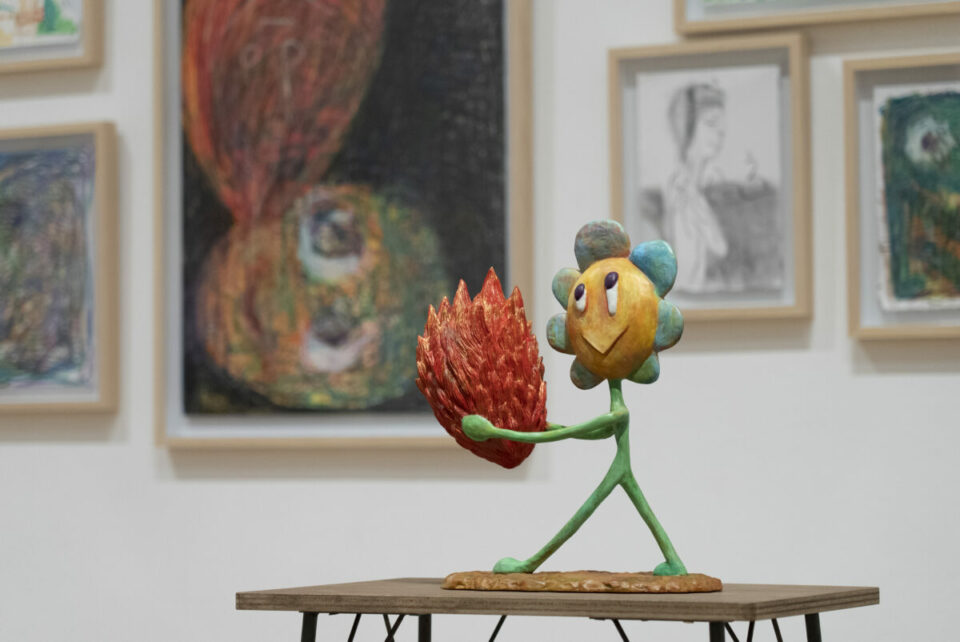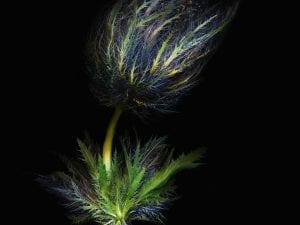Multidisciplinary artist Wei Ting Chen was born in Taiwan and is based in Tokyo. His award-winning, varied practice includes video art, performance and sculpture, along with paintings using acrylic and oil pastel, which are often accompanied by poems that correspond to the visual parts of a piece.
Chen notes: “If personal experience can reflect itself, I think drawing and painting are a kind of slice of self. Instinct drives me to paint and write about fragments of my childhood – like words and poems in my images – figurative but present.”
A: Your practice utilises acrylic, oil pastel and poetry – how do you combine these two processes?
WTC: I am used to using acrylics because of their water-based material and quick-drying properties, which allow them to have a texture between watercolour and oil. The nature of oil sticks is in line with intuitive graffiti, and the oil nature also allows for more direct writing on various media, such as paper or canvas.
My creations are inseparable from poems, like a fragment. I have been experimenting with various mediums, all for the sake of expressing the meaning of the words. After all, my creations are all about expressing the content of poem. Although fragmented, they all revolve around the content of the poem.
A: You often work with other mediums, such as performance and sculpture. What influences your choice of medium?
WTC: I think that my time at Tokyo University of the Arts has made me rethink the core of my work. Before, I always thought that the core of an artist’s work was visual expression. Later, I came across and read conversations with artists and workshops during school. I examined my own process, and for me, the core of my creation has always been around “poem”. Creating poems in writing is more in line with my creative state. Therefore, each medium is used to present the content of the poem.

A: Your images highlight the difference between children and adults. What drew you to this subject, and how does your work draw attention to these differences?
WTC: For me, the socialisation process from childhood to adulthood is an interesting process because I grew up from it. From reading picture books to reading poetry books, from the unknown to the known –even now I still don’t know anything.
In my work, there are often intuitive expressions, such as the interspersed poems, whether they are deleted or half-written. Or, the content of a child’s graffiti-like image, but the content is all implied sadness. I am very emotional about the changes of life, such as the process of becoming an adult, the kites that are getting farther and farther away, the flowers that are wilting, the apples that are ripening, the candles that are melting, and the ocean where the waves are coming and going.
A: What impact does the fragmentary nature of your work have on the finished pieces?
WTC: These fragmentary expressions are more in line with the poems I want to make each time. Each exhibition is made up of a few poems that gradually evolve, or one could say that they are used to summarise. I think of these fragments as part of a puzzle, each one talking about a part of the proposition, a kind of rambling, if you will.
After each project, I would open each image file and regroup each piece, unconsciously finding an extension of the content. Perhaps it is because of these fragments that it opens up the possibility of the text being interpreted or written.

A: How would you describe the relationship between writing and drawing?
WTC: I think that through writing and painting, we can express our thoughts, and similar language is used to carry the meaning. It is worth mentioning that in Japanese, the verbs of painting and writing are both pronounced the same way. Under this concept, painting and writing are probably both expressions of the inner world. Just like skill and language can be trained later, thinking is a continuous production. I would say that I am a person who continues to write, only that the tools I use for writing are painting, writing, or more possibilities.
A: Your work often incorporates childhood items, such as toys and teddy bears. What is the significance to this choice of subject?
WTC: In the process of becoming an adult, you’re bound to lose things that you’ve taken for granted, like moving house, and you always choose to discard and recycle. The subject I chose was the past, perhaps when I revisited my childhood books, diaries, textbook graffiti, etc. years later. I always find intuitive content in them, unadorned, pure and without too much thought. They hold a moment about me, or they represent a time when I existed.

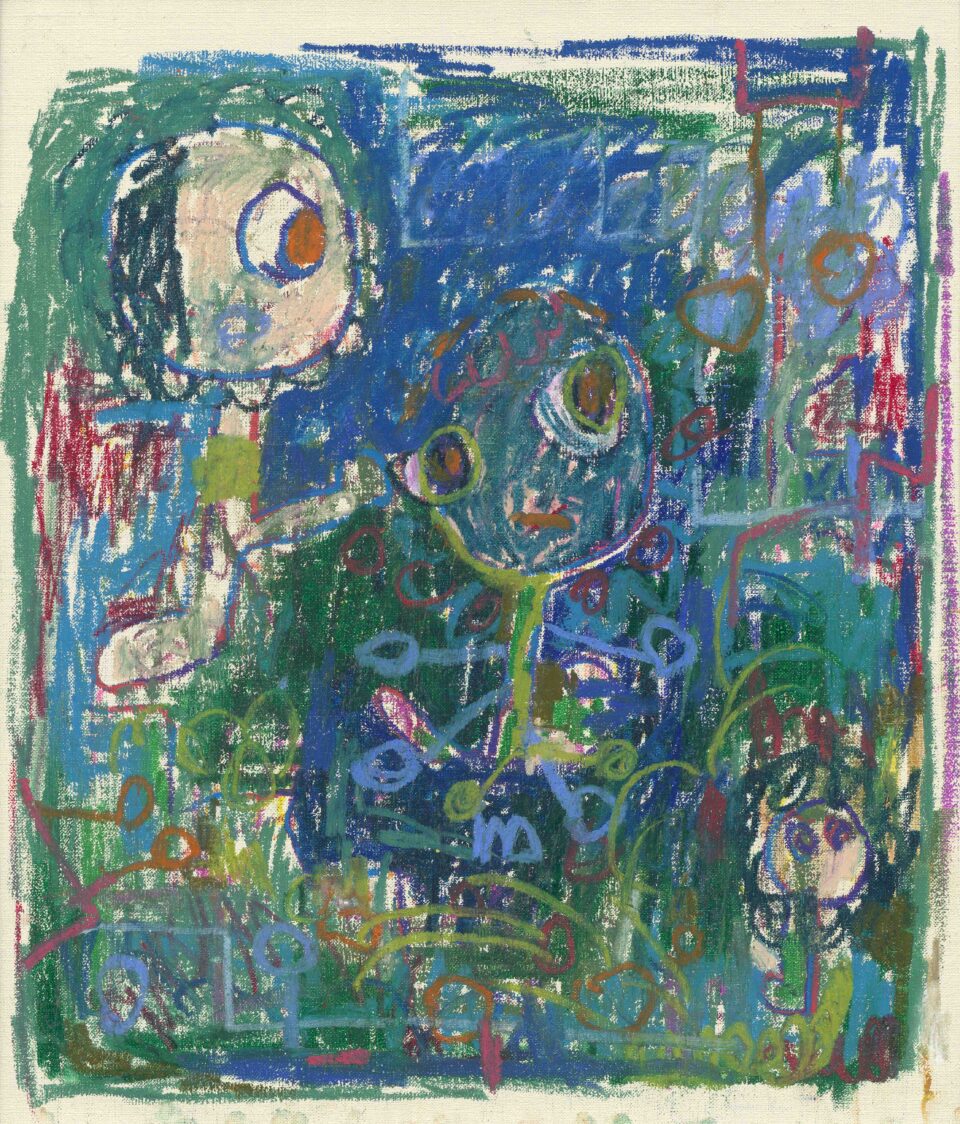
A: To what extent did you university education in Chinese Literature influence your artistic practice?WTC: Through my college education in Chinese literature, I have become more sensitive to the meaning behind things. After all, literature contains a great deal of literary rhetoric, such as symbolism, borrowing, and simile. These techniques allow me to better extend the content and the underlying meaning when thinking about a piece. Objects or colours are all metaphorical. The “candles”, “fading flowers”, “sea” and “falling stars” in my works are actually about impermanence.
A: Does literature continue to inspire your work?
WTC: Yes, I’ve been trying to do a few more poetry books over the years. I think these poems provide me with a hint, at some point, about what I’m going to do next or what I’m going to do next. When I write about my exhibitions, I often use a few poems as the title, which I think is the same as when I paint, or when I conclude my work. The core of what I want to tell is indeed the content of the poem.
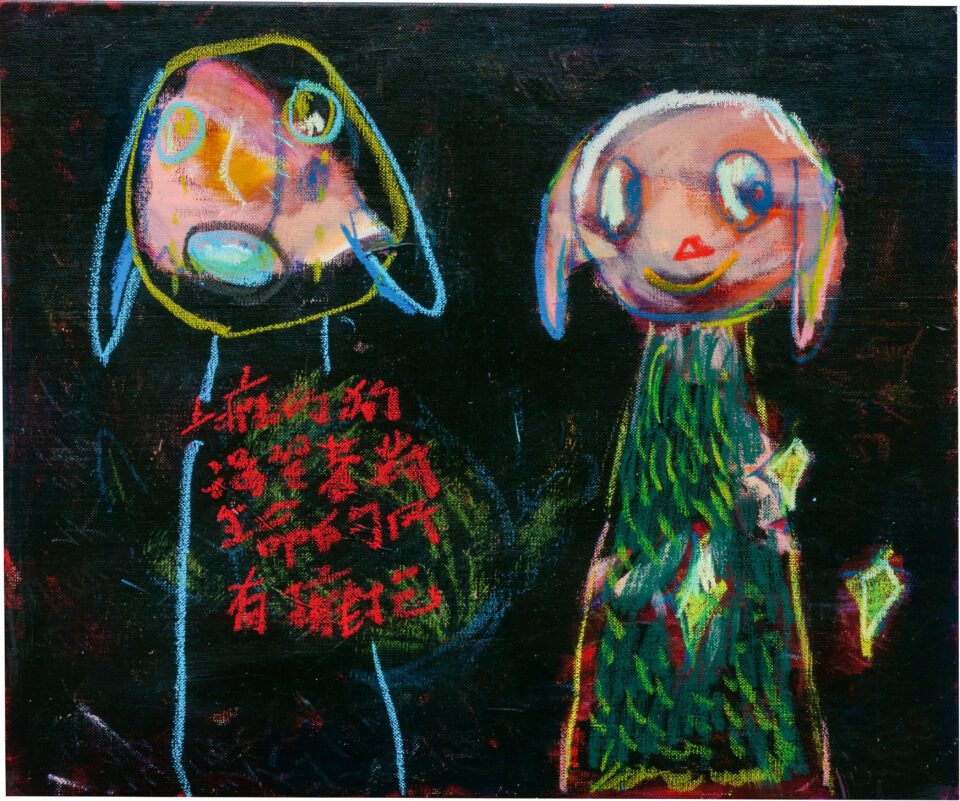
A: To what extent does living in Tokyo impact your art practices?
WTC: When you are in Taipei, you are used to everything; the language is what you are used to, the streets are what you are used to, the structure is what you are used to. After that I went to Tokyo. It has been three years now, and in my second year Covid-19 and I became classmates and spent my semester together at Tokyo University of the Arts.
I still remember the media part, we played with stone, wood, metal and glass, as well as performance art. These crossover experiments were rare and interesting, and there were no boundaries in sight. This has also influenced me to think about creation, and I have been destroying in my writing, destroying structures, destroying absolutes.
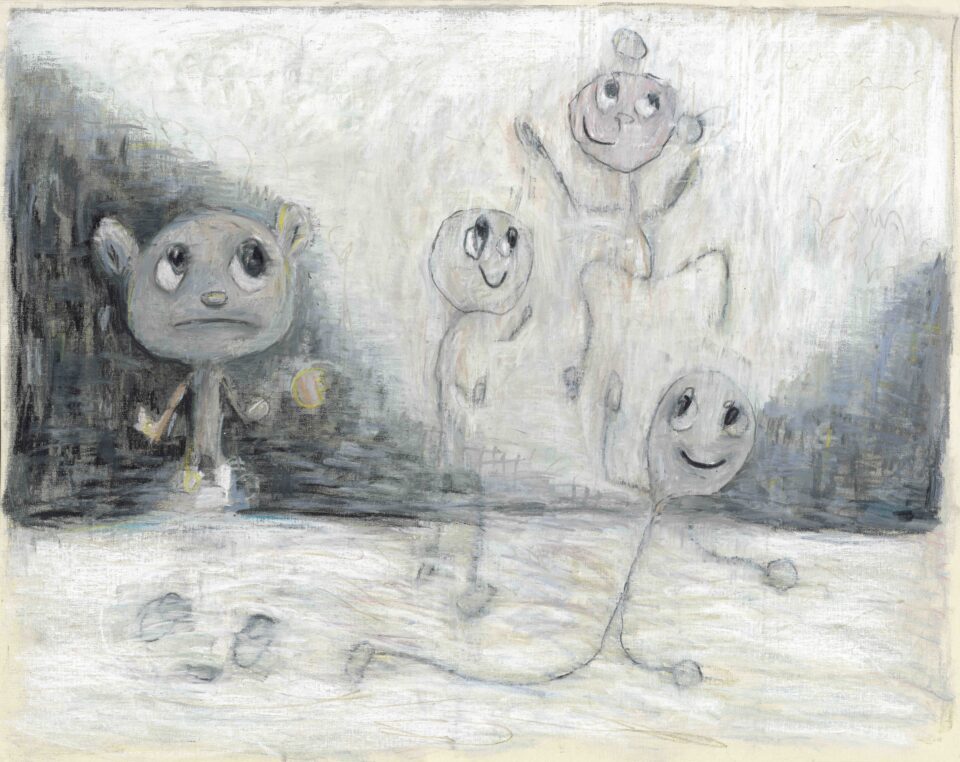
A: Your exhibition Passenger: To Falling Star was held at Over the Influence gallery in Bangkok, until 13 November. This was a debut solo exhibition at this gallery – what is the experience like for you?
WTC: In the past few years, due to the pandemic, we mostly discussed and collaborated with galleries online. In many cases, I was not able to participate in the exhibitions, instead, the works took my place to visit various places.
Like the concept of “the author is dead”, the works are perhaps more open to dialogue with others, and I am very happy to receive various responses. In this exhibition in Thailand, I could feel the discussion about “poem”. Perhaps because my theme was about separation, people were curious about my creative narrative, and these poems became part of the questions I was asked.
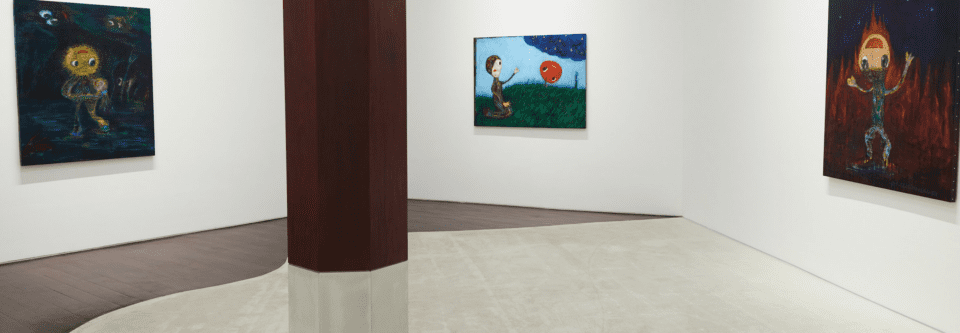
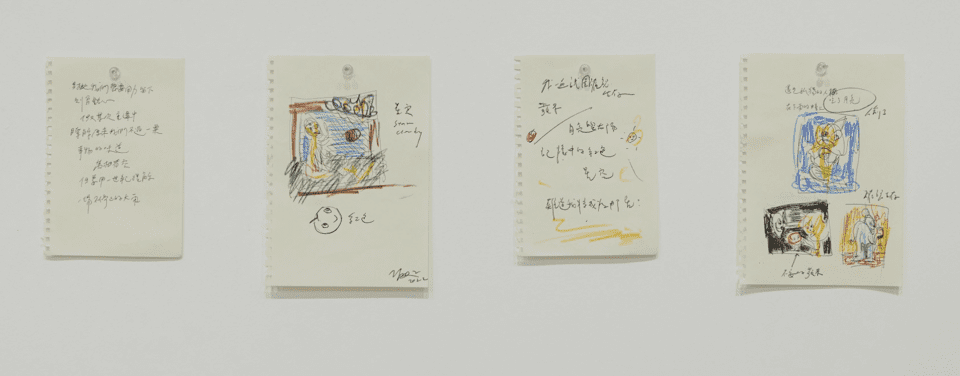
A: The exhibition is dedicated to your grandfather. Can you tell me more about this, and how the title Passenger: To Falling Star relates to your grandfather?
WTC: My grandfather passed away last year, but due to the pandemic, I was unable to return to say goodbye, which is probably something I have always regretted. I have always wanted to document this in some way, and this exhibition may be a tribute to him and to all those who are suffering from saying goodbye.
The title is named after the song Passenger written by Mr. Lin Xi about the singer Faye Wong. The song describes many landscapes that I have experienced, and one of the lines about the blood-red sky reminds me of the view of the sky on the day of the funeral. That sky is a reconciliation for me, and all the things that I cannot accept may eventually dissipate like clouds in the wind. Therefore, I chose this proposition. The sky is a place of reconciliation. The actual fact is that the actual person who is in the marketplace is not a person.
A: Are there are artists that inform your practice?
WTC: Marc Chagall, Rose Wylie, Cy Twombly, Ouyang Chun and Sanyu. Poets including Hsia Yu, Shuntaro Tanigawa, BI Gan and lyricist Lin Xi. Also, singers such as Faye Wong and Song Dongye.
A: Are you currently working on any projects?
WTC: I am currently in the process of applying for an art residency, and I would like to go to different countries to experience more and break some habits. When we are not surrounded by habits, we can create content outside of them. In addition, I am currently working on a new book of poetry.

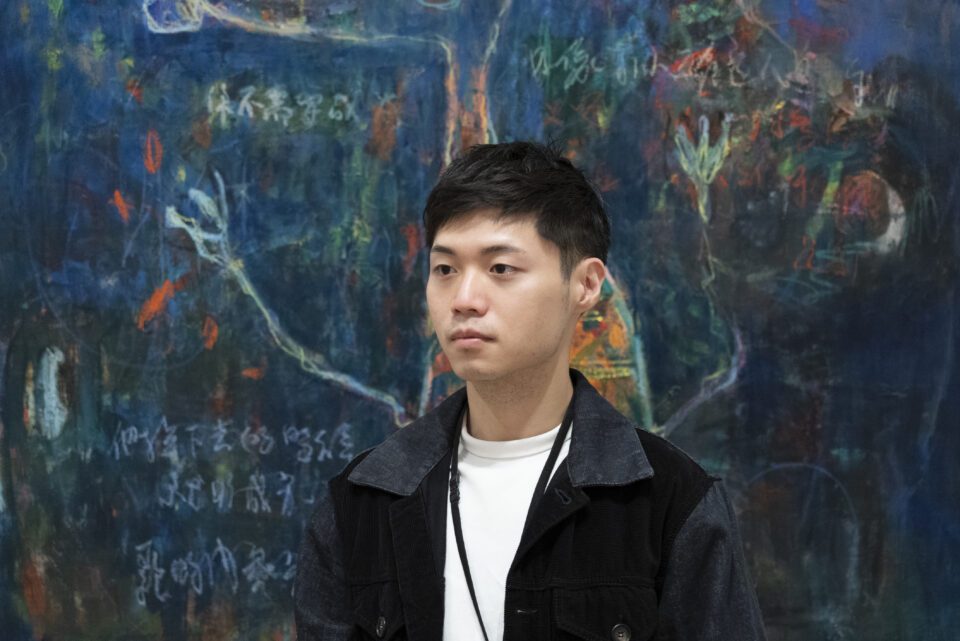
A: What can we expect to see from your work in the upcoming year?
WTC: Maybe I will destroy and reorganise some of the appearances, I hope to create more different content.
www.chenwts.com I Instagram: @chenweiting_art I Twitter: @chenwtwork
All images courtesy of Wei Ting Chen.
The work of Wei Ting Chen appears in the Artists’ Directory in Issue 108 of Aesthetica. Click here to visit our online shop.


